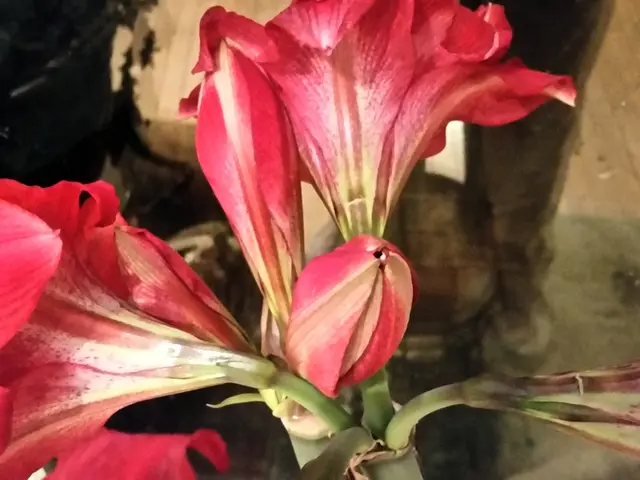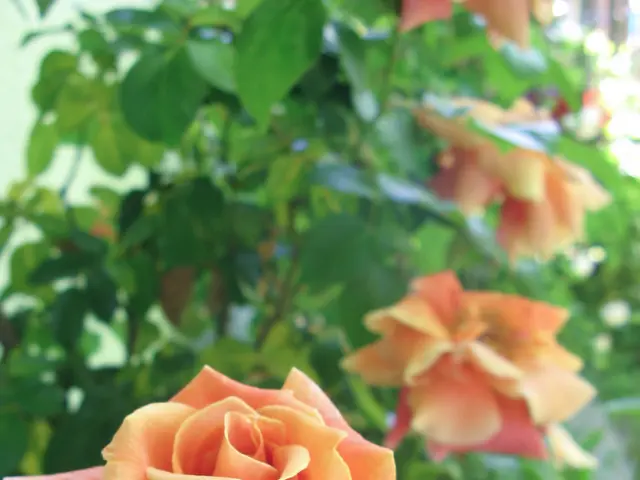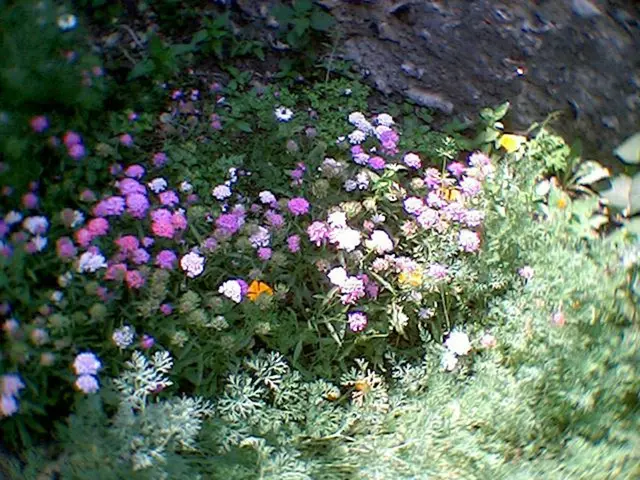Strategies for Preventing and Treating White Mold on Seedlings: A Guide
Top-notch Gardening Advice from Our Pro, Glen
Meet Our Gardening SavantGlen, our resident garden guru, has over a decade of hands-on experience in nurturing, designing, and maintaining gardens as well as offering exceptional landscaping services. When he isn't busy transforming a client's garden, he's whipping up valuable content for this very blog. Here's a taste of his recent articles (see all):
- Mastering Garden Fungicides: Nailing the Secret to Disease-Free Plants 🌱🦠
- Discovering the Sweet Spot: When to Pick Candy Cane Peppers 🌶️💚🏆
- Victory in Sight! A Gardener's Guide to Perfectly Timed Watermelons 🍉🍼🍾
White Mold: The Indoor Gardener's Nightmareкогош online gardening expert Glen has discovered, white mold that plagues seedlings is commonly connected to the devastating disease known as "damping-off." This troublesome issue poses a significant hurdle to successful seedling growth as it targets young plants with its cottony, white fungus and often results in decay and collapse.
A Delicate Balance for Healthy SeedlingsEffective management of white mold requires a multi-faceted approach. Key methods involve proper soil sanitation, environmental control, monitoring moisture, providing adequate ventilation, and using clean containers to reduce risk to seedlings. Natural fungicides and removing infected plants can help maintain seedling health.
Effective Strategies to Evade Damping Off
Below 65°F
- Damping Off 101: Understanding the EnemyWondering how to spot that pesky damping off? Let me fill you in. Damping off is caused by various soil-borne fungi that flourish in overly moist atmospheres. Keep an eye out for the usual suspects: fungal spores lurking in soil, waiting for the perfect storm of excess moisture and poor air circulation to attack.
- Finding the Right Soil: The Key Ingredient for SuccessTo keep that fungal creep at bay, select a sterilized seed starting soil that's been treated to eliminate harmful pathogens which might attack tender seedlings. This control measure significantly reduces the risk of damping off.
- Water, Water Everywhere... But Not Too MuchIt's oh so important to water carefully! Watch out for overwatering which, you guessed it, encourages the very moisture levels that fungal creeps adore. Aim for the Goldilocks spot: damp but not overly damp soil. Glen checks the soil's moisture level frequently to ensure it's just right. 🌱💧
Use heat mats to raise soil temperature
Top Air Circulation and Temperature Tips
- The Wind Beneath Her Wings: Why Good Airflow MattersAdequate air movement acts as a mighty deterrent against the conditions that make fungal spores giddy. Stagnant air combined with high humidity usually forms practically an open invitation for fungi to chill and multiply. Simply place a fan near the seedlings and you'll be creating an airy masterpiece!
- Staying Cool and Cozy: Balancing Temperature for Robust SeedlingsUnwanted damping off can rear its ugly head in both overheated and subzero conditions. To ensure balanced temperatures, aim for the temperate zone: 65-75°F is just about perfect for most seedling varieties.| Temperature Range | Action || --- | --- || Below 65°F | Heaters to the rescue to warm up the soil! || Above 75°F | Loosen up that ventilation, or turn on the A/C to cool things down! ☀️ |
Above 75°F
Detecting and Combating White Mold on Seedlings
Enhanced ventilation or air conditioning can help cool down the environment
- Eye That Fungus: Spotting Signs of InfestationWhen examining seedlings for mold, be on the lookout for telltale signs: cottony white mold on the soil surface or plant base, wilted or stunted seedlings, brown or black rotten roots, and water-soaked spots on stems and leaves.
- White Mold Busters: Destroying the OppositionWhen Glen sees white fuzzy mold pop up on seed starting soil, here's what he does:
- Promote Air Circulation: Remove covers from seed trays and crank up that fan.
- C-List Superheroes: Spray hydrogen peroxide or another natural fungicide directly on the infected areas.
- Calling in The Big Guns: If needed, apply a chemical fungicide (depending on preference for organic gardening).
Advanced Techniques for Serious Gardeners
- Going Pro: Using High-Quality Seed Trays & StartersGlen loves using professional seed trays that are designed especially for indoor seed starting. These trays offer features such as improved moisture management and support for delicate seedlings' roots.
- Keeping Your Garden Tools Spick and SpanProper tool care and sanitation prevents disease outbreaks such as blight. After each use, Glen cleans tools with a bleach solution and soaks them in this mixture for at least 30 minutes. Keep your gardening tools in tip-top shape for a flourishing garden! 🌱🌬️🔨
- Transforming a home into a haven, Glen's lifestyle blogs extend beyond top-notch gardening advice, offering valuable tips and tricks for home-and-garden enthusiasts, delving into matters such as indoor gardening and combating white mold for healthy seedlings.
- In his dedication to gardening, Glen's home becomes a testament to his horticultural prowess, where his garden serves as a stunning living art piece, showcasing his expertise in nurturing, designing, and maintaining diverse plants, while also providing a serene sanctuary for relaxation and enjoyment.








